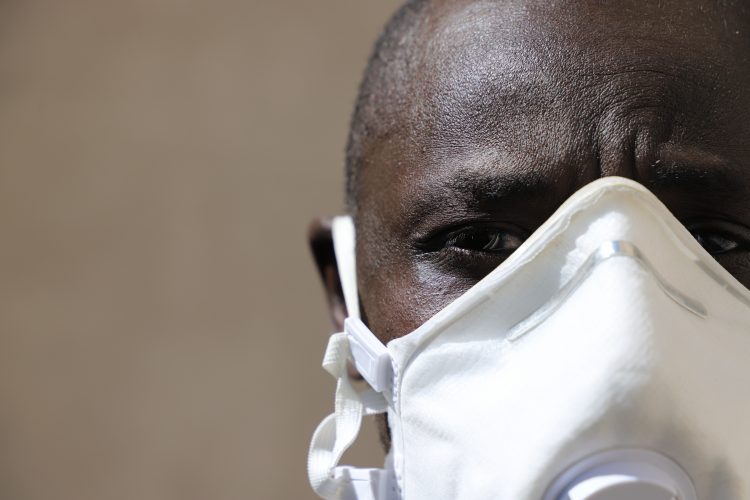Racial disparities in the UK’s health system
- Like
- Digg
- Del
- Tumblr
- VKontakte
- Buffer
- Love This
- Odnoklassniki
- Meneame
- Blogger
- Amazon
- Yahoo Mail
- Gmail
- AOL
- Newsvine
- HackerNews
- Evernote
- MySpace
- Mail.ru
- Viadeo
- Line
- Comments
- Yummly
- SMS
- Viber
- Telegram
- Subscribe
- Skype
- Facebook Messenger
- Kakao
- LiveJournal
- Yammer
- Edgar
- Fintel
- Mix
- Instapaper
- Copy Link
Posted: 18 June 2020 | Sheena Bhageerutty | No comments yet
In light of the knowledge that BAME individuals are more likely to catch coronavirus, Sheena Bhageerutty highlights the racial injustices in the food and health system and examines the nation’s response to the pandemic.


We are in a state of transition, somewhat grieving our old lives and slowly evolving into the new norm. During this uncomfortable period, I have tried to keep active and exercise my brain as much as possible.
Earlier this month, the Global Nutrition Report 2020 was published, revealing significant inequalities in nutrition outcomes within countries and between population groups. The report gave me a new outlook on the relationship between injustices in the food and health system, and piqued my interest in the UK’s response – or lack of – to the ongoing pandemic. For me, the most profound issue raised in the report was the notion of leading the health system with an equitable approach, particularly as COVID-19 has brought health inequalities to the forefront. Yet, they have always existed – be it age, gender, sexuality or ethnicity.
‘The virus does not discriminate, stay indoors! – a phrase I am sure many of you have heard over the past weeks. Particularly after notable figures from the Health Secretary Matt Hancock and even the Prime Minister, Boris Johnson, fell victim. Yet, evidence shows that this statement is, in fact, not true. Black Asian Minority Ethnic (BAME) individuals are twice as likely to be exposed to COVID-19, in comparison to the white population. The BAME community face major disparities in various structural systems, specifically in regard to access to health care.
While this is not exactly a shocking statistic to those of us in the BAME communities, it does not make it any less troubling or unjust. COVID-19 has once again exposed the fragility of our health systems and has laid bare inequalities between communities.
Why does it take a pandemic to bring this issue to the forefront?
Just to be clear, BAME groups make up 14 percent of the population. This means 7.9 million people are currently at a higher risk of contracting the virus.
While this information may be fresh for some ears, it unfortunately only scratches the surface on racial disparities in the UK’s health system. In light of this information, one may rightly question what recommendations have been implemented to help – I hate to be the bearer of bad news. The ‘Health Equity in England: Marmot review 10 Years’ has shown that the progress in England is deteriorating despite all the frameworks and recommendations made in the original review.
Public Health England’s (PHE) report ‘Disparities in the risk and outcome of COVID-19’ aimed to highlight the impact of COVID-19 on inequalities, but it felt more like a summary of statistics and merely a foundation for understanding the in-depth differences which exist between ethnic minorities. The report did outline the underlying factors such as overcrowded households, deprived areas, language barriers, underlying health conditions, and a greater proportion of the BAME community being keyworkers as contributing factors for increased risk of catching the virus and worse outcomes.
But didn’t we know this already? And where are the recommendations and actions for tackling these well-known issues? To provide effective policies we must dig to the core of the problem – no mean feat, requiring introspection across all areas of society, with leadership from our government – which was elected to represent all of us.
To create health campaigns that even attempt to change the future for BAME communities, it is vital to ensure that we are represented and have our voices and lived experiences heard in priority settings, whether this is in local councils, PHE, parliament, expert working groups or any other setting where decisions with impact are made.
Unfortunately, currently only eight percent of MPs are in BAME communities in parliament today. How can we make our views represented and how do we make sure the services are reflecting the needs and preferences of the local population? We can begin by offering interventions that are ethically appropriate, both in terms of location and language used. It is hardly ground-breaking, but providing resources in a language people understand would make a big difference, and surely translation services are not a huge drain on resources? Health systems must also be strengthened by increasing finance, accountability, co-ordination and incorporating lessons learnt from other countries.
There are many challenges we must address and face on the path to equality in health, but being British Asian, I know my voice and influence in the NGO community is vital to seeing progress in society. I must use my platform as a researcher and nutritionist at a health advocacy charity to raise awareness of these issues and demand solutions. As we start to build our ‘new normal’, I hope to see further improvements in our nation’s health systems.
About the author
Sheena Bhageerutty is a Registered Associated Nutritionist and has been working with the Action on Sugar and Salt team for the last year. Her current role is Assistant Nutritionist. Since graduating with a First Class Honours in Nutrition & Health from Roehampton University, Sheena has completed an MSc. in Nutrition for Global Health at London of Hygiene and Tropical Medicine. Sheena previously worked as a Nutritionist at Mytime Active delivering MEND sessions (Tier 2 lifestyle weight management services) to enable children, families and post-natal mothers to have a healthier, fitter and happier lifestyle.




